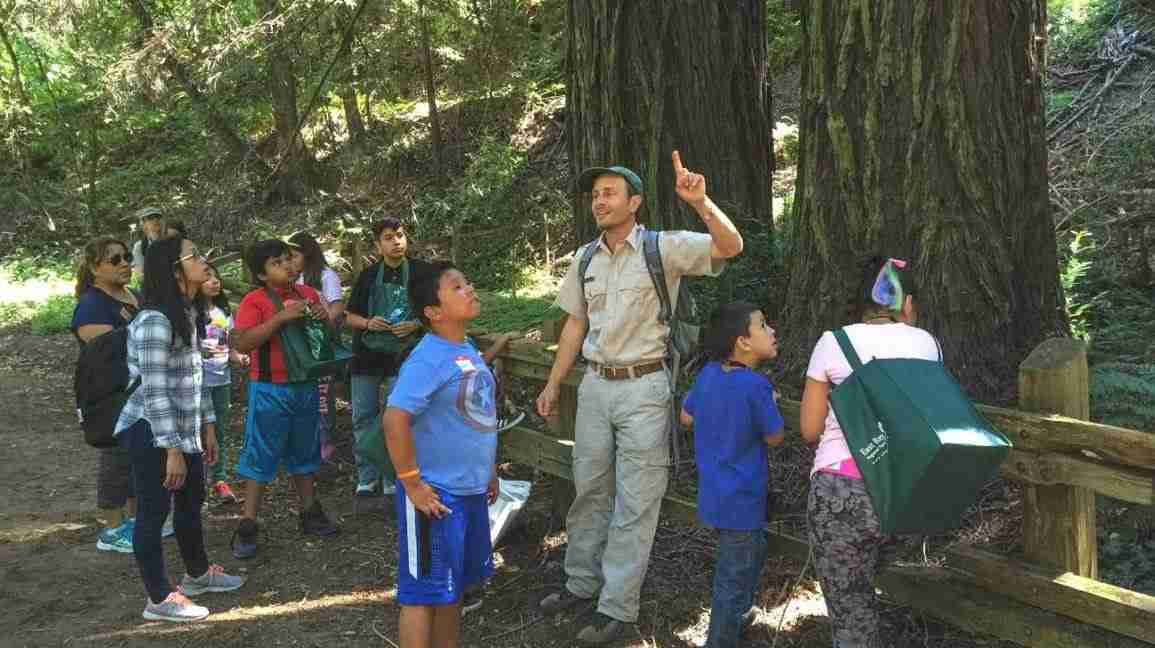
If you’re lucky, the next time you show up stressed out at a doctor’s appointment, your prescription might be a walk in the park… literally.
A new study showed that doctors could help reduce their patients’ stress levels, along with boosting other health benefits, simply by recommending that people spend time in nature.
“What we learned is that nature can help with stress,” said Dr. Nooshin Razani, a study author and director of the Center for Nature and Health at the University of California San Francisco (UCSF) Benioff Children’s Hospital Oakland.
“And that a doctor’s office is an appropriate place to talk to people about stress and talk to them about the importance of getting outside,” she added.
Researchers recruited 78 children and their parents from a low-income, racially and ethnically diverse patient population at a pediatric clinic in Oakland, California.
A pediatrician at the clinic encouraged parents to regularly visit local parks over the course of the study, with clear benefits for those who listened.
“Every increase in park visits per week was correlated with a small and incremental decrease in stress,” Razani told Healthcare Website. “So that would argue for small amounts of nature — like a daily dose — to help with stress relief.”
Researchers measured stress levels using cortisol levels in the saliva.
People who visited parks more frequently also saw other health benefits, including increased physical activity and a drop in loneliness.
They also grew to love nature more, what researchers called “nature affinity.”
The researchers didn’t just examine the health benefits of nature. They also looked at whether the low-income parents needed more support to get them out into nature with their children.
All child-parent pairs received a postcard with a map showing the location and bus routes to seven local parks, a journal for tracking their park visits, and a pedometer.
The pediatrician also talked with them about the benefits of nature and spending time outside with family.
Some children and parents, though, were invited to attend three group outings, three weeks in a row, with their families.
Families in this group met the doctor and several hospital volunteers at the clinic on the day of the outing.
They traveled by bus to a local park, where they played games, picnicked, and went for an easy walk. They then headed back to the clinic on the bus.
It turns out, though, that people who received this additional support didn’t see bigger drops in their stress levels, compared to the other group.
In fact, families who were just given a map visited parks more frequently than families that had been invited to the organized outings.
The
Access to nature is a right for all
Much research has looked at the health effects of spending time in nature.
There are even people who specialize in leading people into nature for the sole benefit of their physical and mental health.
Known as forest therapists, these guides lead people on two- to three-hour walks, helping them to let go, de-stress, and open up.
“Forest therapy is like a moving meditation. It’s very mindful. It’s very slow moving,” said Sarah Earley, a certified forest therapy guide from Manitoulin Island in Ontario, Canada.
Although this practice is sometimes known as forest bathing, walks can occur anywhere in nature — in a meadow, along a shoreline, or on a mountain.
Earley said that each walk involves a “series of invitations.” This might include “find something in motion and move with it” or “lie down on the ground and notice the world.”
This conscious interaction with nature is different from the way many people spend time outside.
“When we’re going on a hike, we’re kind of on a mission,” said Earley. “We’ve got an endpoint in mind.”
She said people she’s led on walks have welcomed the chance to unwind and decompress, and to be playful again. Others have loved seeing nature in a new way.
“All of those are beautiful responses, and all very different,” said Earley. “None of them are right or better.”
Not everyone has access to a forest therapist, though.
But Razani thinks that even small doses of nature have benefits — even at your local park.
“We would advocate for you to find green spaces that are near you,” said Razani, “where you can go for short daily doses of nature.”
Earley agreed. “Spending 15 minutes being quiet, just watching what’s going on around us, and developing a relationship with nature and ourselves is really beneficial,” she said.
The new study is also the first randomized controlled trial to look in “practical terms” at how doctors can encourage their patients to spend more time in nature.
“Often a primary care provider won’t screen patients for stress because they have nothing to offer them,” said Razani.
But giving patients a park prescription is easy for doctors to do, and can be effective for many people.
Razani sees spending time in nature as one of several coping mechanisms that people can use to deal with stress in their lives.
She said these kinds of tools may be “even more important” for low-income populations, which tend to have higher stress levels than the national average.
This makes access to nature not just a health issue, but also an equity issue.
Especially since stress can worsen other health problems such as heart disease, asthma, and type 2 diabetes.
“It’s important to not frame nature as something that is inaccessible,” said Razani. “It is everyone’s right to have access to green spaces near where they live.”